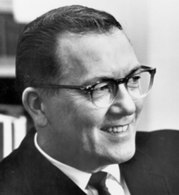| 92nd United States Congress | |
|---|---|
91st ← → 93rd | |
 United States Capitol (c. 1970) | |
January 3, 1971 – January 3, 1973 | |
| Members | 100 senators 435 representatives |
| Senate majority | Democratic |
| Senate President | Spiro Agnew (R) |
| House majority | Democratic |
| House Speaker | Carl Albert (D) |
| Sessions | |
| 1st: January 21, 1971 – December 17, 1971 2nd: January 18, 1972 – October 18, 1972 | |
The 92nd United States Congress was a meeting of the legislative branch of the United States federal government, composed of the United States Senate and the United States House of Representatives. It met in Washington, D.C., from January 3, 1971, to January 3, 1973, during the third and fourth years of Richard Nixon's presidency.
Contents
- Major events
- Major legislation
- Constitutional amendments
- Party summary
- Senate
- House of Representatives
- Leadership
- Senate 2
- House of Representatives 2
- Caucuses
- Members
- Senate 3
- House of Representatives 3
- Changes in membership
- Senate 4
- House of Representatives 4
- Committees
- Senate 5
- House of Representatives 5
- Joint committees
- Employees
- Legislative branch agency directors
- Senate 6
- House of Representatives 6
- Footnotes
- See also
- Notes
- References
- External links
The apportionment of seats in this House of Representatives was based on the 1960 census. Both chambers maintained a Democratic majority.








